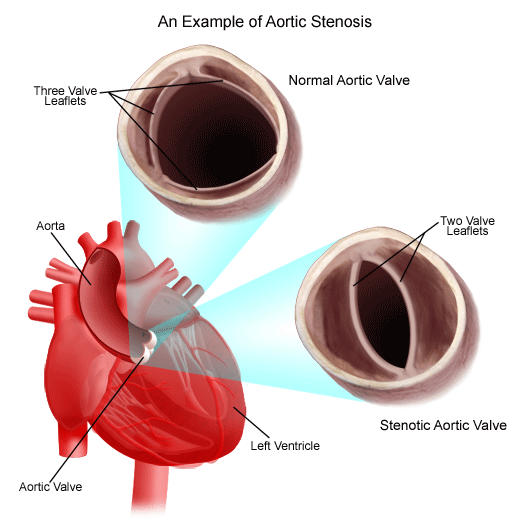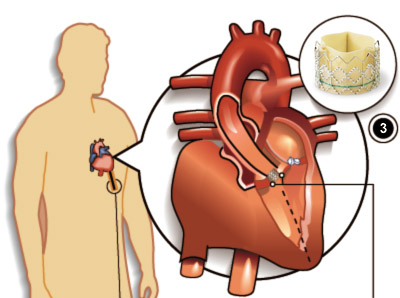Aortic Stenosis Aortic Stenosis is a condition in which the heart's aortic valve narrows. This narrowing prevents the valve from opening fully, obstructing blood flow from the heart into the aorta onward to the rest of the body. When the aortic valve is obstructed, the heart needs to work harder to pump blood to the body. Eventually, the heart muscle becomes thicker because it has to pump harder due to the obstruction. In addition, the heart can pump only a limited amount of blood - and eventually can't provide the increase in blood flow needed for day to day activities. |
|||||||||||||||||||||
 |
Symptoms Test And Diagnoses Doctors will perform several tests to confirm the diagnosis and determine the severity of the problem.
After reviewing the pre-procedure tests, you and the physicians will determine the best treatment option for you. 1. Medications he Edwards SAPIEN transcatheter heart valve, developed by Edwards Lifesciences, gives patients who are considered high-risk or non-operable an alternative to traditional aortic valve replacement surgery.
Why Transcatheter? The new heart valve is implanted without open-heart surgery, using minimally invasive techniques. First, the Edwards Sapien transcatheter heart valve is loaded onto a balloon delivery catheter. Then it is threaded through the patient’s circulatory system from the leg (transfemoral approach) or inserted between the ribs (transapical approach) directly into the heart and postioned to replace the patient’s diseased valve. Both procedures are performed on a “beating heart,” without the need for cadiopulmonary bypass and its associated risks.
Who is a possible candidate for the procedure? • Critical aortic stenosis
|
